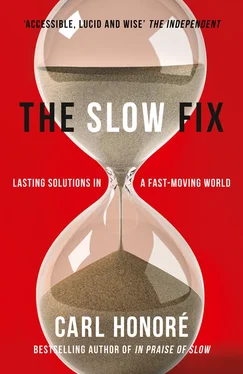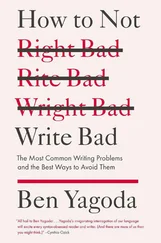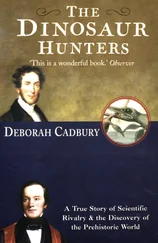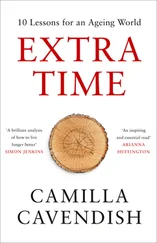BP is a textbook example. In 2005 the company’s refinery in Texas exploded, killing 15 workers and injuring 180 more. Less than a year later, oil was twice found to be leaking from a 25-kilometre stretch of corroded BP pipeline off the coast of Alaska. Coming so close together, these two incidents should have been a wake-up call, a warning that years of cutting corners had started to backfire. In 2006 John Browne, then BP’s chief executive, seemed to agree the time for quick fixes was over. ‘We have to get the priorities right,’ he announced. ‘And job one is to get to these things that have happened, get them fixed and get them sorted out. We don’t just sort them out on the surface, we get them fixed deeply.’
Only that never happened. Instead, BP carried on much as before, earning a slew of official reprimands and a hefty fine for failing to live up to Browne’s pledge. In April 2010 the company paid the price for its cavalier approach when an explosion ripped through its Deepwater Horizon rig, killing 11 workers, injuring 17 others and eventually spewing more than 200 million gallons of crude oil into the Gulf of Mexico, making it the worst environmental disaster in US history.
The BP fiasco is a reminder of just how perniciously addictive the quick fix can be. Even when lives and large sums of money are at stake, when everything from our health and relationships to our work and the environment is suffering, even when bombarded by evidence that the road to calamity is paved with band-aid solutions, we still gravitate towards the quick fix, like moths to a flame.
The good news is we can beat this addiction. In every walk of life, more and more of us are starting to accept that when tackling hard problems faster is not always better, that the best solutions take flight when we invest enough time, effort and resources. When we slow down, in other words.
There are many questions to answer in this book. What is the Slow Fix? Is it the same recipe for every problem? How do we know when a problem has been properly solved? Above all, how can we put the Slow Fix into practice in a world addicted to speed?
To answer those questions, I have been travelling the planet, meeting people who are taking a fresh approach to solving tough problems. We will visit the mayor who revolutionised public transport in Bogotá, Colombia; hang out with the warden and inmates at a state-of-the-art prison in Norway; explore how Icelanders are reinventing democracy. Some solutions we encounter may work in your own life, organisation or community, but my goal is to go much deeper. It is to draw some universal lessons about how to find the best solution when anything goes wrong. That means spotting the common ground between problems that on the surface seem completely unrelated. What lessons can peace negotiators in the Middle East, for instance, take from the organ donor system in Spain? How can a community regeneration programme in Vietnam help boost productivity in a company in Canada? What insights can French researchers trying to reinvent the water-bottle take from the rehabilitation of a failing school in Los Angeles? What can we all learn from the troubleshooters at NASA, the young problem-solvers in Odyssey of the Mind, or gamers who spend billions of hours tackling problems online?
This book is also a personal quest. After years of false dawns and half-measures, of shortcuts and red herrings, I want to work out what is wrong with my back. Is it my diet? My posture? My lifestyle? Is there an emotional or psychological root to all this spinal misery? I am finally ready to slow down and do the hard work needed to repair my back once and for all. No more duct tape, band-aid or chewing-gum cures. No more peeing on frozen legs.
The time has come for the Slow Fix.
CHAPTER ONE
Why the Quick Fix?
I want it all, and I want it now.
Queen, rock group
St Peter’s Church seems untouched by the impatient swirl of downtown Vienna. It stands in a narrow square, tucked away from the noisy shopping streets that criss-cross the Austrian capital. Buildings lean in from all sides like soldiers closing ranks. Visitors often wander past without even noticing the church’s delicious baroque façade and green domes.
Stepping through the immense wooden doors is like passing through a wormhole to a time when there were few reasons to rush. Gregorian chants whisper from hidden speakers. Candles cast flickering light on gilded altarpieces and paintings of the Virgin Mary. The smell of burning incense sweetens the air. A stone staircase, winding and weathered, leads down into a crypt dating back a thousand years. With thick walls blocking out mobile phone signals, the silence feels almost metaphysical.
I have come to St Peter’s to discuss the virtues of slowing down. It is a soirée for business people, but some clergy are also present. At the end of the evening, when most of the guests have dispersed into the Viennese night, Monsignor Martin Schlag, resplendent in his purple cassock, comes up to me, a little sheepishly, to make a confession. ‘As I was listening to you, I suddenly realised how easy it is for all of us to get infected by the impatience of the modern world,’ he says. ‘Lately, I must admit, I have been praying too fast.’
We both laugh at the irony of a man of the cloth behaving like a man in a suit, but his transgression underlines just how deep the quick-fix impulse runs. After all, prayer may be the oldest ritual for solving problems. Throughout history and across cultures, our ancestors have turned to gods and spirits in times of need, seeking help in tackling everything from floods and famine to drought and disease. Whether praying can actually solve problems is a matter of debate, but one thing is clear: no god has ever offered succour to those who pray faster. ‘Prayer is not meant to be a shortcut,’ says Monsignor Schlag. ‘The whole point of praying is to slow down, listen, think deeply. If you hurry prayer, it loses its meaning and power. It becomes an empty quick fix.’
If we are going to start solving problems thoroughly, we must first understand our fatal attraction to speedy solutions. We need to know why even people like Monsignor Schlag, who devote their lives to serene contemplation in places like St Peter’s, still fall for the quick fix. Are we somehow hardwired to reach for the duct-tape? Does modern society make it harder to resist peeing on frozen legs?
After my encounter with the monsignor, I turn to a secular expert on the workings of the human brain. Peter Whybrow is a psychiatrist and director of the Semel Institute for Neuroscience and Human Behavior at the University of California in Los Angeles. He is also the author of a book called American Mania , which explores how brain machinery that helped early man survive in a world of privation makes us prone to gorging in the modern age of plenty. Along with many in the field of neuroscience, he believes our addiction to the quick fix has physiological roots.
The human brain has two basic mechanisms for solving problems, which are commonly known as System 1 and System 2. The first is fast and intuitive, almost like thinking without thinking. When we see a lion eyeing us from across a watering hole, our brains instantly map out the best escape route and send us hurtling towards it. Quick fix. Problem solved. But System 1 is not just for life-or-death situations. It is the shortcut we use to navigate through daily life. Imagine if you had to reach every decision, from which sandwich to buy at lunch to whether to smile back at that fetching stranger on the subway, through deep analysis and anguished navel-gazing. Life would be unbearable. System 1 saves us the trouble.
By contrast, System 2 is slow and deliberate. It is the conscious thinking we do when asked to calculate 23 times 16 or analyse the possible side effects of a new social policy. It involves planning, critical analysis and rational thought, and is driven by parts of the brain that continue to develop after birth and into adolescence, which is why children are all about instant gratification. Not surprisingly, System 2 consumes more energy.
Читать дальше












